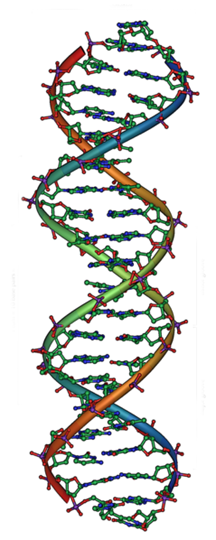
Part of a DNA double helix
| This is a work in progress: lots of writing, formatting, revising, proofing left to do! — David McMurrey |

In much of the work of revising sentence-style problems, you must be able to recognize subjects and verbs—both in independent clauses as well as in dependent clauses. This ability is especially important in these two chapters:
Links to these chapters are available at the end of this chapter.
Grammatical subjects taken numerous forms—not just single words, but compounds, phrases, and whole clauses. In the chapter on characters and actions, you need to be good at recognizing subjects because there you must make a clear distinction between grammatical subjects and “true” subjects—the actual characters, the actors, who do the action of the sentence.
Grammatical subjects can be grouped into the following categories:
Single-word subjects. A single word acting as a subject is the easiest to spot:
The purpose of the Minnesota Study of Twins Reared Apart is to document as thoroughly as possible the heritability and development over time of the physical, mental, and personality traits that make up human individuality.
It is one of the largest and most comprehensive such programs in the world.
Dr. Thomas Bouchard at the Minneapolis campus of the University of Minnesota founded the Minnesota study.
The Minnesota Study of Twins Reared Apart was founded by Dr. Thomas Bouchard at the Minneapolis campus of the University of Minnesota.
This program also studies identical twins reared together.
He still directs the program and has become one of the world's foremost authorities on the study of behavior in human twins.
As you can see, to identify the subject, you must strip away—ignore—surrounding modifiers such as adjectives, adverbs, articles, prepositional phrases, and participial phrases. In the preceding examples, these include The, Dr. Thomas, at the Minneapolis campus, of the University of Minnesota, of Twins Reared Apart, and This.
Compound subjects. Subjects can also be composed of two or more words joined by a coordinating conjunction such as and, or, nor:
A personality trait inventory and a mental-abilities test are [not is] used to assess the twins' general psychological status.
Tommy and Bernie, the twins raised in the same family, were at opposite ends of the “agreeableness” axis, meaning that they were very dissimilar psychologically and behaviorally.
Genetic factors and nonshared environmental factors contribute about equally to the differences we see
in human personality.
Unicellular protists and the monerans are unique in that the organism is the cell—the cell itself is an organism.
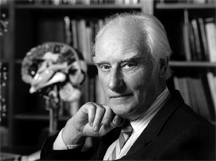
Phrase subjects. Gerund phrases are the most common phrases that can act as subjects. Remember that a gerund is the -ing form of a verb acting as a noun. A gerund phrase is the -ing form of a verb along with other words, all acting together as a noun. Less commonly, infinitive phrases can be used as subjects. Participial phrases, prepositional phrases, and absolute phrases can, with great difficulty, be forced to serve as grammatical subjects, but only very awkwardly. The following examples show gerunds functioning as subjects:
Studying twins offers the clearest insight we have into the role of genetics as well as environment in human behavior.
Finding of distinctive behavioral patterns in organisms like fruit flies raises an interesting question: How far down the evolutionary tree can we descend and still detect evidence of “behavior”?
Not talking about the role of genes in behavior without taking into account the environment is impossible.
Notice that these gerund phrases, which function as subjects of these three sentences, can only take a singular verb (offers, raises, and is).
Clause subjects. The type of clause that can function as a grammatical subject is the noun clause. A noun clause, as its name implies, is a clause functioning as a noun. You may know that adjective and adverb clauses exists, but, as their names imply, they can't function as nouns. A noun clause is a rather specialized sort of dependent clause as the following examples show:
That parents, through their own behavior and example, play a dominant role in forming their children's personalities is one of our most cherished beliefs.
What the data tell us quite clearly is that as children begin to interact with the larger external world, particularly in their teen years, their own genetically determined personality factors come very much to the fore.
For most animals, what we call the physical or ecological environment, the natural surroundings in which the individual operates is the environment.
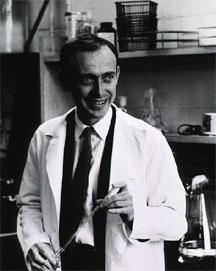
As with gerund phrases, these noun clauses functioning as subjects can only take a singular verb (is in all three cases).
A link to the chapter on phrases and clauses is available at the end of this chapter.
Inverted subjects. Rather infrequently, writers switch the order of subject and predicate. (Remember that a predicate is the verb plus all other words that go with it.) Instead of the usual subject-then-predicate sequence, you see predicate then subject.
Much larger than their moneran ancestors are the protists.
Not "alive," by this definition, for example, are viruses, which are much smaller than cells.
Exchanged directly across the entire cell membrane are simpler substances such as salts and gasses dissolved in water.
Spread out among the 24 chromosomes that make up the human genome are an estimated 50,000 to 100,000 genes.
Obviously, the more common way to express these ideas would be the following:
Protists are much larger than their moneran ancestors.
By this definition, viruses, which are much smaller than cells, are not "alive, for example.
Simpler substances, such as salts and gasses dissolved in water, are exchanged directly across the entire cell membrane.
An estimated 50,000 to 100,000 genes are spread out among the 24 chromosomes that make up the human genome.
Why do writers invert subjects and predicates? One reason may have to do with continuity and transitions: the topics of the sentences that preceded the inverted versions were probably monerans, alive, membrane, and chromosomes, respectively. These words may well have been the focus of preceding sentences. The writer may have wanted to begin these inverted-word-order sentences with these words in order to achieve better transitions. This technique is known as the old-to-new pattern.
A variation of inverted subject and verb involves the expletive there is. As you will learn elsewhere, expletives are useful devices for emphasis. There is a storm coming! Emphasis occurs at the end of a sentence; thus storm and coming get more emphasis than the rather indifferent A storm is coming. However, writers tend to overuse the expletive, thus creating wordy, actually less emphatic writing. Here are some examples that illustrate how expletives cause subjects to come after verbs:
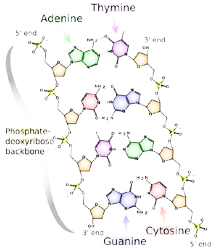
When it is analyzed in terms of underlying molecular and genetic mechanisms, there is in fact little that is new in human behavior——most were already in place billions of years ago.
There is a general agreement among psychologists that most personalities can be defined according to where individuals place along five personality “axes.”
There is some evidence that identical twins attached to separate placentas may develop slightly differently, and there has been much debate about how this might affect their future development.
Subjects of dependent (subordinate) clauses. Just as independent clauses have subjects and verbs, so do dependent clauses. The kinds of variations addressed in the preceding section can also occur with the subjects of dependent clauses.
Individual defective genes can disrupt human behavior. But that does not mean that the behavior relating to these diseases in question is controlled by a single gene.
Here, the dependent clause functions as the direct object of the main verb mean. However, inside this dependent clause is a subject, behavior, and a verb, is. The intervening word diseases might lead you to think the dependent-clause verb should be are, but that word is just modifier material that you can ignore.
That mutation of individual genes often disrupts an entire behavior simply reflects the fact that the biological systems underlying that behavior are tightly regulated.
In this one, you have a dependent clause acting as a modifier of the noun fact. The singular word behavior might lead you to think the dependent-clause verb ought to be is, but behavior is in a modifying phrase.
For example, if one of the components in a computer system breaks down, memory function is likely to be lost.
In this example, the subject is one, not components, and thus the verb has to be breaks.
Although there were hints that at least some kinds of cancer might have a genetic basis, no one knew where to begin.
In this one, you have to remember that in constructions with variants of there is, the verb agrees with what follows it.
Just because particular biological phenomena are complex does not mean a priori that large numbers of genes are involved.
This last one is tricky: phenomena is a plural word.
Cancer cells, at least when they first arise in the body, are no different from their noncancerous neighbors, with the exception that they have somehow an acquired allelic of cell division genes that results in cell division when there should be none.
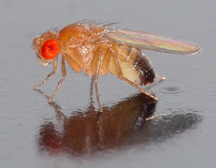
The independent-clause core of this sentence is Cancer cells are no different. It has four dependent clauses:
at least when they first arise in the body
that they have somehow an acquired allelic of cell division genes
(allelic) that results in cell division
when there should be none.
Subjects with lots of surrounding or intervening modifiers. Grammatical subjects can be hard to pinpoint when they are surrounded by lots of words such as adjectives, adverbs, prepositional phrases, verbal phrases, and dependent clauses. Consider whether you would have problems spotting the grammatical subject in the following sentences:
The resulting media attention, laced with hints that the researchers would be interested in finding additional sets of twins reared apart, has [not have] led to the rapid identification of a number of
other suitable pairs of both monozygotic and dizygotic twins.
The likelihood that identical twins shared the same personality traits was [not were] considerably greater than the likelihood that fraternal twins would share these same traits in almost every case.
The surprising result of numerous studies of twins, both biological and adopted siblings, is [not are] that shared home experiences have a minimal effect in shaping the personalities of children.
Behavioral traits such as agressiveness or docility, loyalty and bravery, and even the ability to manage flocks or retrieve game, have [not has] been enhanced through selective breeding of dogs, for example.
If you are confident you can identify grammatical subjects, use this exercise to test yourself:
As with grammatical subjects, also be sure that you can spot the grammatical verb of a sentence. These vary in the following ways:
Single word verb. The easiest verb to spot is the single-word verb, as the following examples illustrate:
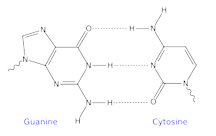
Ethologists study behavior in laboratory and domesticated animals.
They also look at behavior all the way down the food chain, in organisms like insects and worms.
The common fruit fly, Drosophila melanogaster, engages in incredibly complex behavioral patterns, ranging from courtship and mating to simply finding the next meal.
Compound verb. Compound verbs are two separate verb phrases that have the same subject; these two separate verb phrases are joined by a coordinating conjunctions (for example, and or or).
The first major life form to appear in evolution, the monerans are also single cells but are much smaller than protists.
The monerans are much smaller than protists and are also much simpler in terms of internal structure.
In this definition, something "alive" can extract energy from the environment and use that energy to produce DNA-directed copies of itself, by itself.
Dr. Bouchard still directs the program and has become one of the world's foremost authorities on the study of behavior in human twins.
As you can see, monerans is the single subject of the first and second examples. something is the single subject of the two verb phrases in the third example; Bouchard, in the fourth example.
Verb phrases: verbs with auxiliary and helping verbs. As you have already seen in the preceding examples, verbs are often made up of more than one word. These are verb phrases. The additional words include auxiliary verbs, helping verbs, and modal verbs. Examples of these are is, has, are, was, has been, can, would, would have been, and verbs with -ing or -ed. Here are a few more examples:
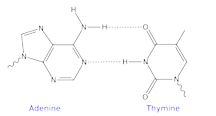
Single genes, when defective, can often disrupt human personality and behavior.
Much of the early history of human genetics was devoted to looking for single-gene differences that could explain differences in things like behavior.
Verbs of dependent (subordinate) clauses. Just as dependent clauses have their own subjects, they also have their own verbs. The kinds of variations addressed in the preceding section also occur with the verbs of dependent clauses.
Pheromones are defined as chemicals released by one organism into its surroundings that influence the behavior of another organism, usually of the same species, and often of only one sex.
In this example, the subject of the dependent clause chemicals occurs in the independent clause; still, the verb in the dependent clause influence must agree with it.
But ants also use pheromones to lay trails for other food-gathering ants to follow once they identify a food source.
In this dependent clause, both subject and verb occur within the dependent clause.
McClintock stumbled on the possible use of pheromones by humans while looking at a phenomenon that has intrigued investigators for many years, but for which the evidence is at best anecdotal—that women who live closely together tend to synchronize their menstrual cycles.
Lots going on in this dependent-clause jamboree! And, as a matter of fact, there is one additional dependent clause that cannot be highlighted in the above:
that women who live closely together tend to synchronize their menstrual cycles.
Yes, it's a dependent clause inside another dependent clause. The outer dependent clause is that women tend to synchronize their menstrual cycles. Obviously, something is badly missing from this clause; thus, the inner dependent clause is restrctive—it is vitally necessary to the meaning of the outer dependent clause. The inner dependent clause is who live closely together; its subject is in the outer dependent clause.
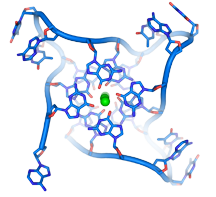
If you are confident you can identify grammatical verbs, use this exercise to test yourself:
If you are confident you can identify grammatical subjects and grammatical verbs, go to these exercises where you can test yourself:
If you've not had enough reading about grammatical subjects and verbs, or need more practice identifying them, here are some additional resources:
Return to the table of contents
Information and programs provided by admin@mcmassociates.io.